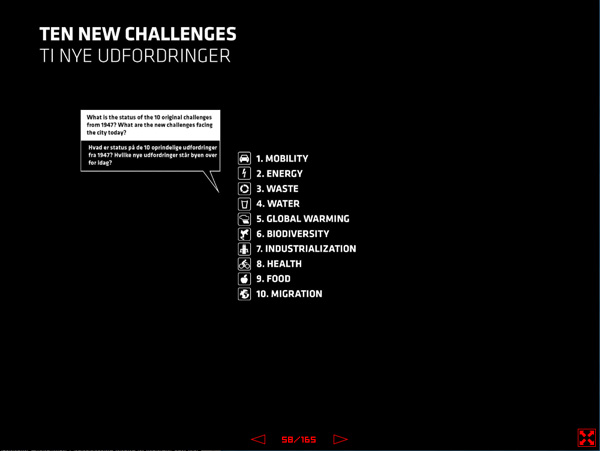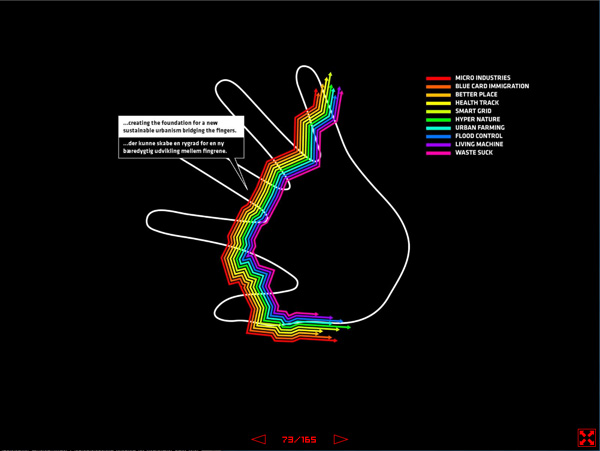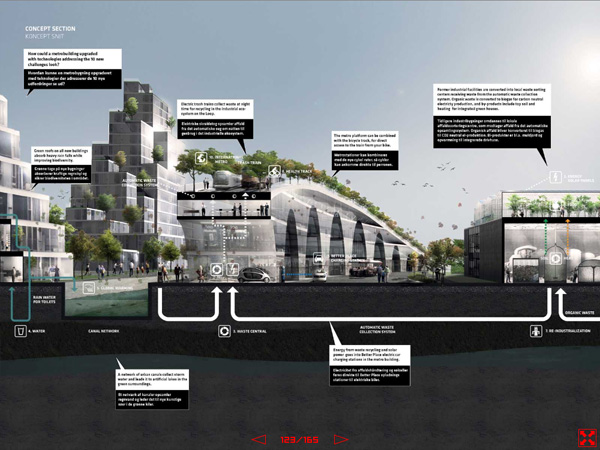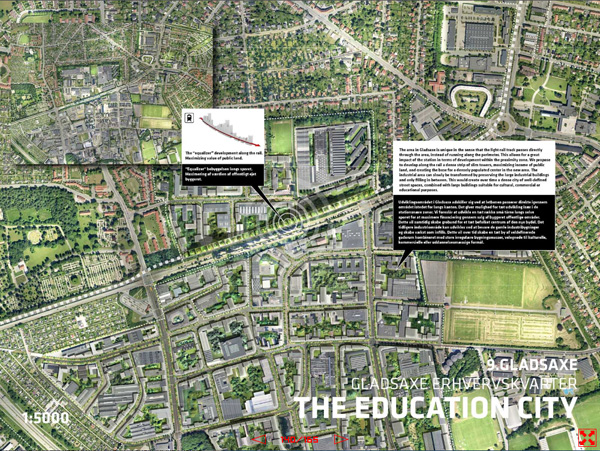LOOP City is an urban plan for future growth in and around Copenhagen, Denmark created by the Danish capital’s own BIG (Bjarke Ingels Group). The focus of the plan is largely on reimagining the residential and industrial areas to the west of central Copenhagen that were developed in accordance with the Finger Plan, a post-WWII urban plan headed by Steen Eiler Rasmussen. The Finger Plan laid out “fingers” of urbanization that reach west out from central Copenhagen as well as green spaces to occupy the spaces between the fingers, all in line with answering what they saw as the 10 essential issues facing the city in the future. However well conceived, under the pressures of post war industrialization, the Finger Plan has led to extensive urban sprawl and transportation issues.
LOOP City seeks to reimagine Greater Copenhagen by centralizing urbanization around a light rail system that would ultimately be a part of a larger transportation/development loop that would extend around the entirety of the Oresund Region.
The plan is for an area equal in size to central Copenhagen with a similar urban profile, turning areas of 25% urban density to areas more like the central city, where density is as high as 200%. According to BIG’s plans, if the new areas were urbanized similarly to central Copenhagen it could provide housing for over 325,000 new residents and create more than 280,000 working places.
Perhaps more important to the overall growth of one of the world’s greenest cities is the opportunity the LOOP City concept provides for the implementation and integration of sustainable technologies that until now have not been employed on such a massive scale or in such close concert with one another.
BIG incorporates into the LOOP City technologies from pneumatic waste collection pipe systems to integrated bike infrastructure to promote health and sustainability. Design and technological integration is based around answering 10 similar modern problems that Rasmussen’s group attempted to answer 60 years earlier with the Finger Plan.
As well as conceptualizing the project on a region-wide scale, BIG has drawn up much more specified plans for the individual areas of development around each rail station. Area plans range from manmade wetlands and lakes to absorb rainfall in the “Green Waterfront” to a “Science City” based around the world renowned Danish Technical University. All areas incorporate concepts like green roofs, photovoltaic cells and electric cars.
A 165 point slideshow that more entirely maps out designs and illustrates integrated technologies can be found on their website.


























